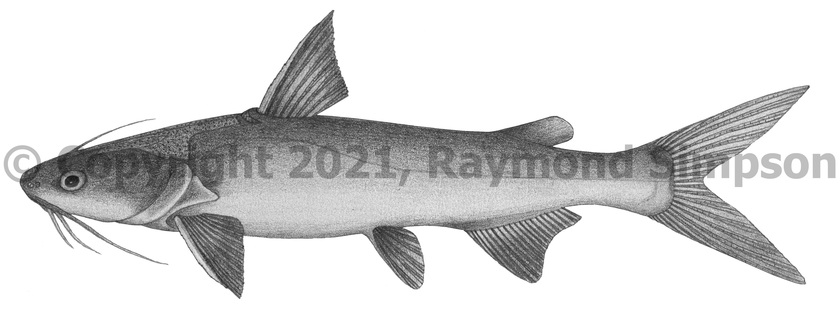
Common Name
Mayan Sea Catfish
Year Described
Günther, 1864
Identification
Dorsal Fin: I, 7
Pelvic Fin: 6
Anal Fin: 17-20
Pectoral Fin: 9-11
Caudal Fin: 13 branched (6 upper, 7 lower)
Gill Rakers: 14-18 on first arch, 17-20 on second arch, 31-37 total
The following characters taken together are characteristic of Ariopsis according to Marceniuk et al., 2017: posterior cranial fontanel absent, epiphyseal scar indistinct, temporal fossa absent or indistinct, subvertebral process weak, posterolateral uruhyal process subequal to distal end of bone, obvious fenestra surrounded by lateral ethmoid and frontal bone, gill rakers present on posterior margin of first two gill arches, and females possessing pads on the pelvic fins.
Body elongate and robust. Head long and relatively flattened, with a gradual frontal profile becoming steeper beyond the supraoccipital processes. Head plate obvious and bumpy. Cephalic shield long; rectangular or slightly narrower between eyes. Lateral processes on shield triangular and projecting laterally. Dorsomedial depression present. Fleshy portion of deep dorsomedial groove does not extend forward to eyes. Bony extension of dorsomedial groove absent or not visible in fleshed out fish. Rear of process tapering to a crescent shaped and bumpy nuchal plate. Lateral margin of sphenotic straight. Pterotic margin convex. Snout rounded. Nostrils not connected by a furrow. Anterior nostril round with fleshy rim and posterior with a flap covering opening. Eye large and laterally placed. Three pairs of barbels; maxillary much longer than both mental barbels. Mouth subterminal with thick lips and arched jaw. A single arched patch of villiform teeth on maxillary. Palatine teeth with two rounded or oval patches on each side of palate (one small and one large). Gill rakers present on all arches. Dorsal fin high with a strong serrated spine. Pectoral fins about the same size as dorsal fin with strong serrated spines. Pelvic and anal fins located far back on body. Adipose fin present over anal fin base. Caudal fin strongly forked. Body naked. Free vertebrae 43-46.
Color
Body yellowish brown to gray-brown grading to whitish on belly. Maxillary barbels and fins medium to dark gray. Base of pelvic and pectoral fins darker.
Size
Maximum size to 35cm TL but usually <25cm TL.
Habitat
Mostly fresh and brackish waters of rivers, lakes, and estuaries over soft bottoms.
Range
Known from the eastern coast of the Yucatan Peninsula to northern Honduras.
References
Marceniuk, A.P., Acero, A.P., Cooke, R.G., & Betancur-R, R. 2017. Taxonomic revision of the New World genus Ariopsis Gill (Siluriformes: Ariidae), with description of two new species. Zootaxa.
Other Notes
The closest W. Atlantic relative is Ariopsis canteri, which lives off Colombia and has higher and mostly non-overlapping anal fin and gill raker counts.